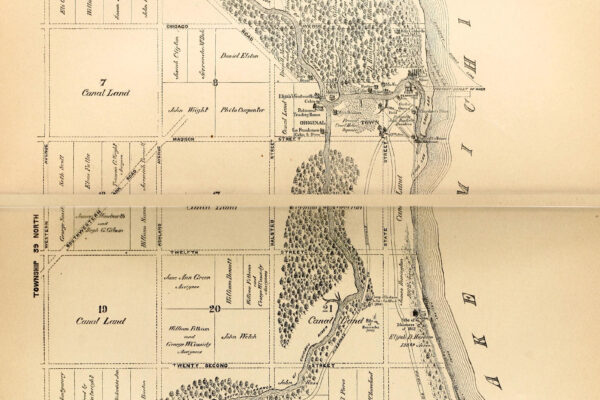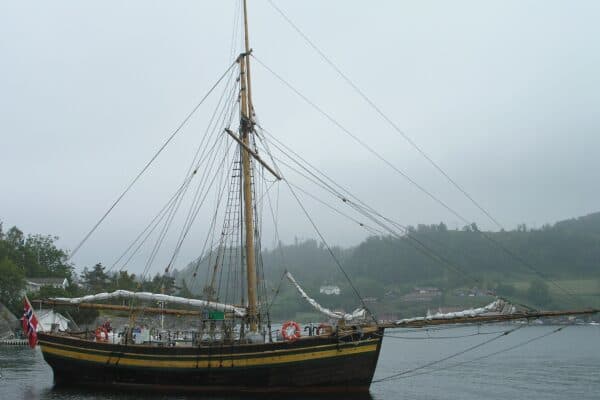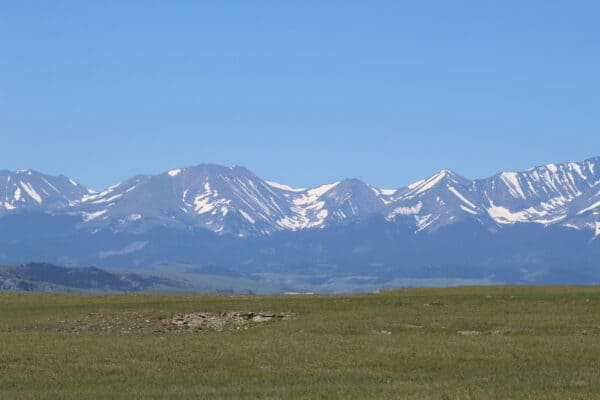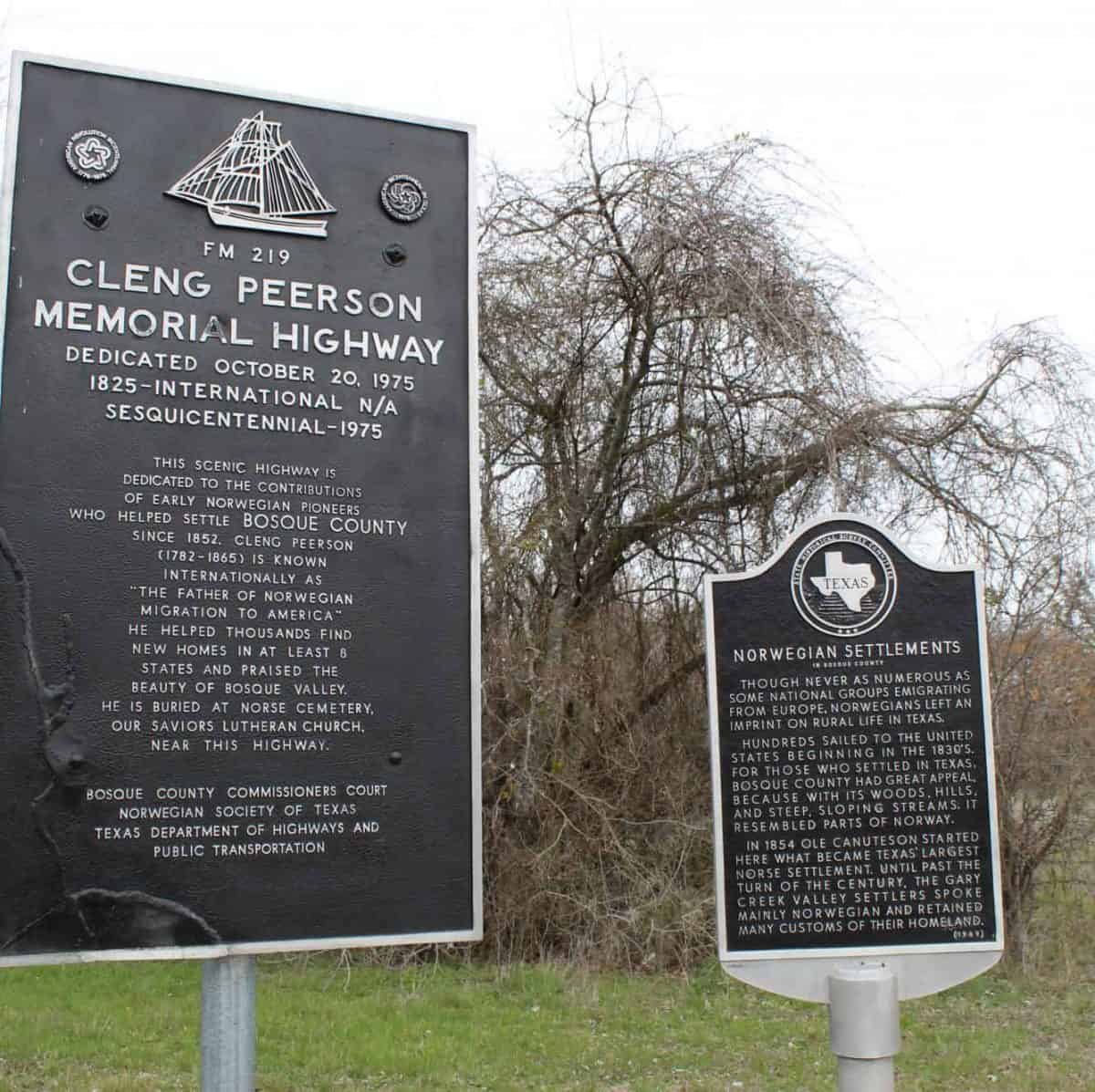
Cleng, Cleng
Name like a song.
Lonely and lean
Drifting along.
Crossing the prairies and wading
the streams,
His purse full of nothing, his hat
full of dreams.
— Veien har ingen ende.
Kilde: Erik Bye, 1975 i boken Erik Bye, Veien har ingen ende, med tegninger av Karl Erik Harr, utgitt av J. W. Cappelen Forlag a.s, Oslo 1976, s. 27.
Cleng Peerson
Cleng Peerson was born in 1783 in Tysvær, Rogaland County, Norway, and died in December 1865 at Norse, Bosque County, Texas. He has a long-lived and well-earned reputation as the pathfinder of Norwegian emigrants. Today he is still a symbol of all people who dare to leave their homes and communities and take the risk of wandering into the unknown to build a new life. During his own life Cleng Peerson represented tolerance for others with regard to their way of life: their religion, language, and the color of their skin. He would talk with everyone he met on his way, and respected them all.
The concept of migration concerns movement in general. When we speak about human migration, we think about wandering, exploration and settling, groups or individuals crossing borders between countries and regions. Sometimes migration comes about because of poverty and repression, sometimes by the unknown possibilities at another place. It is our goal that the site will promote tolerance and respect for people on the move – be it the migrants of today, or of the centuries before us.
They came to build

On this site we will present short articles on migration: on lived life, but also articles about cultural, social, religious, economical and political elements that together create the society where the migrants lived their lives. See Why migration?
If you would like to contribute an article, see Write an article!
www.clengpeerson.no will be updated on a regular basis.
Latest news!
Emigrants from Byneset, Trøndelag, ended up in Montana
Before the Civil War, emigrants from Norway usually crossed the Atlantic on board a Norwegian sailing ship from a Norwegian harbor to New York or Quebec. This mode of transportation changed radically in the 1870s. Trans-Atlantic steamship companies from British ports offered faster journeys. A steamship crossed the Atlantic in less than half the time of a sailing ship. On top of that the passengers…
Read more… Emigrants from Byneset, Trøndelag, ended up in Montana
The Archive
- Canadian prairies and Norwegian immigrants
- Cleng Peerson og tidlig emigrasjon
- Drømmen om egen gård
- Helse og levekår
- Innvandring, utvandring og migrasjonskjeder
- Kirke, utdanning, norskhet og etnisitet
- Mining, sheep and cattle
- Nordmenn i den amerikanske borgerkrigen
- Norske immigranter i Midtvesten
- Norske immigranter i Texas
- Norske ingeniører i Amerika
- Norske innvandrere og indianere
- Norwegian immigrants in Montana
- Norwegian immigrants in the mining industry
- Tilbakevandring

Time to tell the story of early Norwegian immigrants in Montana
It is high time to tell the story of early Norwegian immigration to Montana. In his excellent book from 1958, Kenneth Bjork, West of the Great Divide. Norwegian Migration to the Pacific Coast, 1847-1893, wrote that important research themes such as…
Read more… Time to tell the story of early Norwegian immigrants in Montana
Early sheep industry in Montana. The big picture
Many people have written about the history of the Montana cattle industry. In comparison, historical research and writing on the sheep industry in Montana is scant. The stories of “the great sheep trails from California and Oregon have lain in deep…
Gold discovery led to the establishment of Meagher County, Montana
Late in the fall of 1864 gold was discovered in a gulch on the west-facing slopes of the Big Belt Mountains. The small stream flowing through the gulch drained into Canyon Ferry Lake. The gold was discovered by four former Confederate…
Read more… Gold discovery led to the establishment of Meagher County, Montana
From the middle of Norway to Musselshell Valley, Montana
Two Grande brothers from Trondheim, the middle of Norway, in 1866 set out on a long and winding journey to the United States. They crossed fjords and oceans, followed rivers, roads and trails over plains, valleys and mountain ranges before they…
Read more… From the middle of Norway to Musselshell Valley, Montana
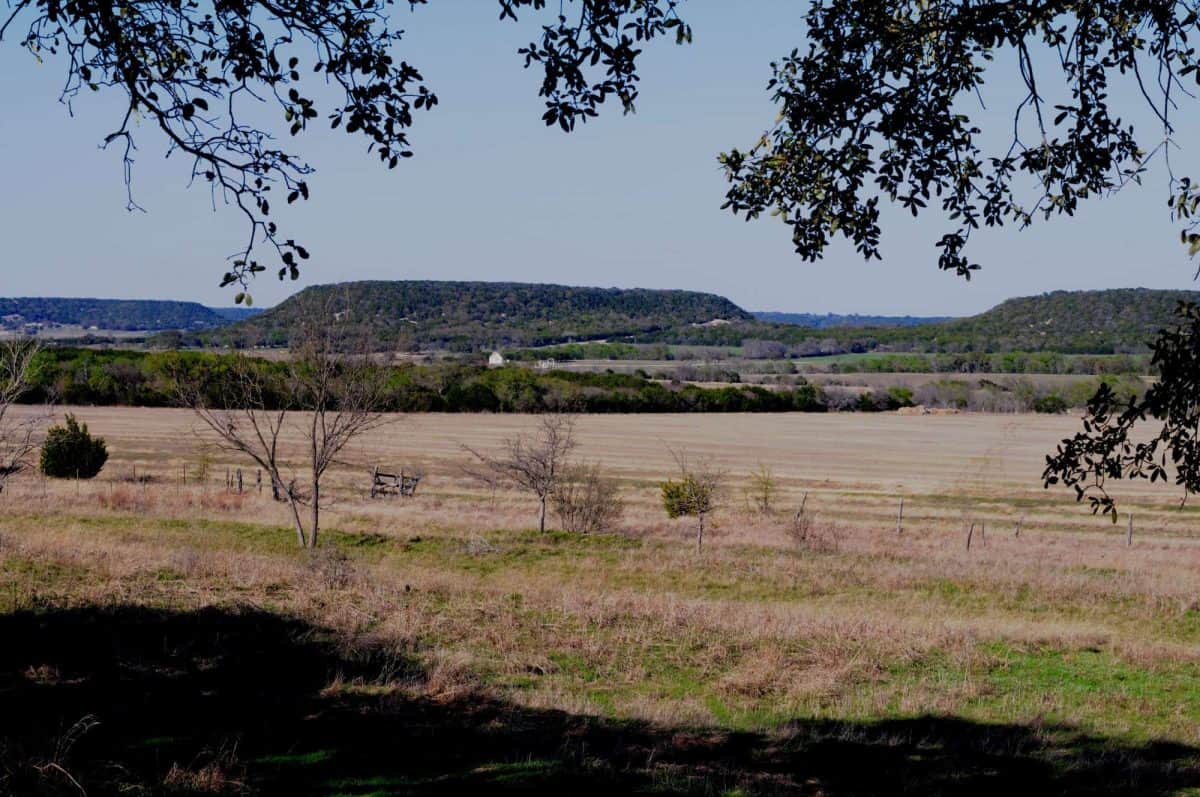
The long, low hills in Bosque reminded them of Norway.
Better land further west?
A map of Chicago from 1830, showing streets and buildings. When Cleng Peerson came here in 1833, he saw a “small village”. But the streets for a greater city were laid out as early as in in 1834.
1825 – the beginning of organized emigration from Norway
Quakers in the town of Stavanger gave Cleng Peerson an assignment to travel to New York in 1821. They wanted him to explore the conditions for Norwegian immigrants. The assignment was fulfilled in 1825 with the first organized group of emigrants from Norway to…
Read more… 1825 – the beginning of organized emigration from Norway
From 2023: First priority Texas, Montana, Alberta and Saskatchewan
In July 2025 it will be 200 years since the first organized group of Norwegian immigrants left the city of Stavanger, Norway. Cleng Peerson was their pathfinder in western New York in 1825, and in Fox River, Illinois, in 1833. His last 15 years…
Read more… From 2023: First priority Texas, Montana, Alberta and Saskatchewan
Step-by-step migration to Montana
Some of the early Norwegian settlers in Montana came from the Rushford area in Fillmore County, Minnesota. Several people in Rushford organized a society with the aim of exploring for better land in Montana. Because of several years with crop failures caused by hail,…





